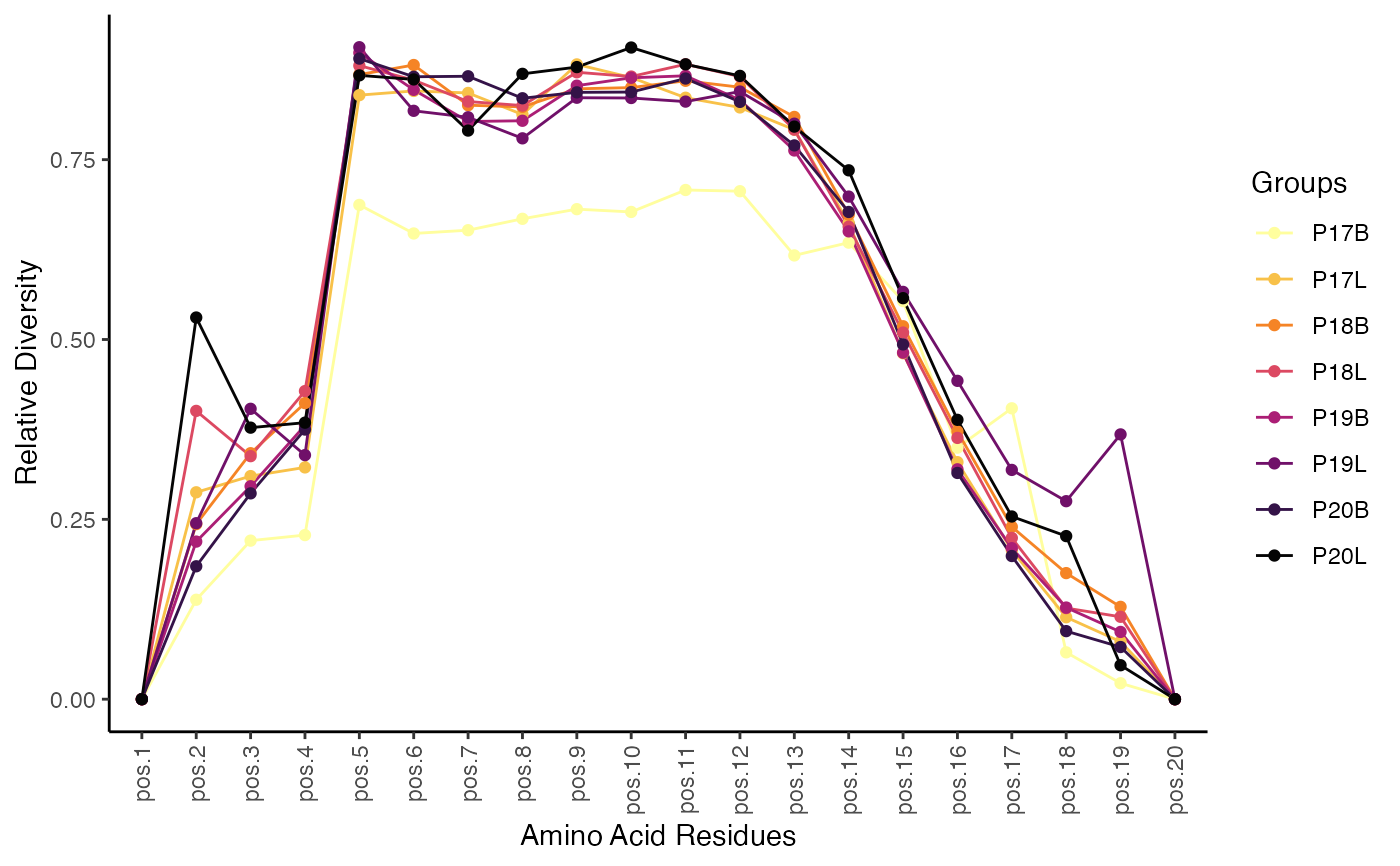Examining the Diversity of Amino Acids by Position
Source:R/positionalEntropy.R
positionalEntropy.RdThis function the diversity amino acids along the residues of the CDR3
amino acid sequence. Please see clonalDiversity() for more information
on the underlying methods for diversity/entropy calculations. Positions
without variance will have a value reported as 0 for the purposes of comparison.
positionalEntropy(
input.data,
chain = "TRB",
group.by = NULL,
order.by = NULL,
aa.length = 20,
method = "norm.entropy",
exportTable = FALSE,
palette = "inferno",
...
)Arguments
- input.data
The product of
combineTCR(),combineBCR(), orcombineExpression()- chain
The TCR/BCR chain to use. Accepted values:
TRA,TRB,TRG,TRD,IGH, orIGL(for both light chains).- group.by
A column header in the metadata or lists to group the analysis by (e.g., "sample", "treatment"). If
NULL, data will be analyzed as by list element or active identity in the case of single-cell objects.- order.by
A character vector defining the desired order of elements of the
group.byvariable. Alternatively, usealphanumericto sort groups automatically.- aa.length
The maximum length of the CDR3 amino acid sequence.
- method
The method to calculate the entropy/diversity -
"shannon","inv.simpson","gini.simpson","norm.entropy","pielou","hill0","hill1","hill2"- exportTable
If
TRUE, returns a data frame or matrix of the results instead of a plot.- palette
Colors to use in visualization - input any hcl.pals
- ...
Additional arguments passed to the ggplot theme
Value
A ggplot object displaying entropy or diversity by amino acid position.
If exportTable = TRUE, a matrix of the raw data is returned.
Examples
# Making combined contig data
combined <- combineTCR(contig_list,
samples = c("P17B", "P17L", "P18B", "P18L",
"P19B","P19L", "P20B", "P20L"))
# Using positionalEntropy()
positionalEntropy(combined,
chain = "TRB",
aa.length = 20)
